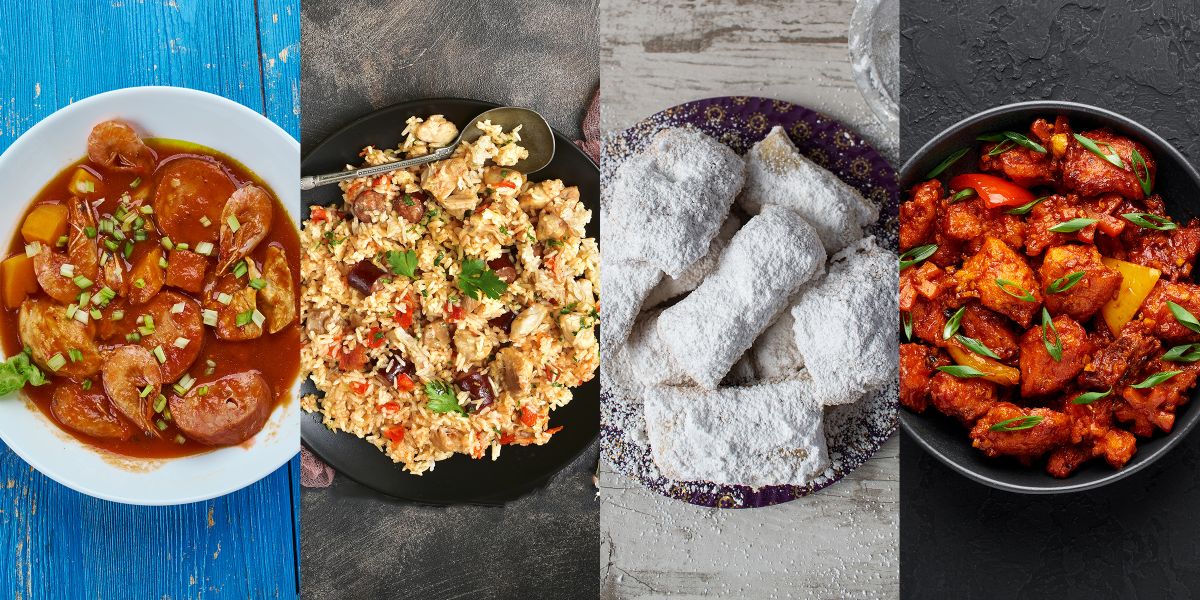Top Hat Engage 2020 is just four weeks away. Get to know New Orleans with style and substance and unparalleled hospitality. The conference is located at the New Orleans Marriott on NOLA’s famed Canal Street, between the French Quarter and the Warehouse District, with views overlooking the Mississippi River and downtown New Orleans.
The gastronomy of New Orleans is the most distinctively recognized regional cuisine in the United States. Some dishes originated locally, while others stem from the city’s Creole influence, Cajun history and elements of traditional Southern cooking.
Influences of Cajun and Creole cuisine
Creole cuisine is unique to the New Orleans area and is a fusion of Spanish, French, Native American, and West African cooking. It makes use of rich sauces and complex preparation techniques to bring a unique character and flavor to its dishes. Cajun cuisine also relies on some traditional French cooking techniques, as it stems from the Acadians, who were French Canadian colonists expelled from Canada’s atlantic provinces by British settlers. Cajun food is known for its unique use of many seasonings, including garlic, hot peppers, and filé powder. Soul food is similar to traditional Southern US food, with origins that trace back to West Africa, composed of hearty, flavorful dishes made with a mix of economical ingredients like collard greens and hearty vegetables, as well as local ingredients like fresh fish and seafood.
Try K-Paul’s Louisiana Kitchen for Creole and Cajun food in a welcoming, casual environment.
Get Into Gumbo
Gumbo is Louisiana’s official state dish, and it consists primarily of a strongly-flavored stock, meat or shellfish, a thickener, and what Louisianians call the “Holy Trinity” of vegetables—celery, bell peppers, and onions. Creole gumbo usually contains shellfish, and a dark roux, filé, or both. Tomatoes are traditionally found in Creole gumbo and frequently appear in New Orleans cuisine. Cajun gumbo is often based on a dark roux and is made with shellfish or poultry, and sausage or ham are often added just before serving as well. Gumbo is traditionally served over rice. A third, lesser-known variety, the meatless gumbo z’herbes, is essentially a gumbo of slow-cooked greens for the vegetarians in the crowd.
Try it here: For world-class gumbo, try Cochon Restaurant, just one mile from the Engage 2020 venue.
Jambalaya
Jambalaya is a popular fusion dish in New Orleans, incorporating Spanish, French, and West African influences and ingredients. The dish has been a New Orleans staple since Spanish colonizers tried reconstructing their native paella using local ingredients and cooking methods. Today, the dish is comprised of a mix of meat—chicken, seafood, or sausage, or all three—peppers, onions, other vegetables, spices and rice combined in a variety of ways. New Orleans families often have unique Jambalaya recipes that have been passed down through the generation.
Try it here: For authentic New Orleans jambalaya, visit Mother’s Restaurant, just a 5 minute walk from the Engage 2020 venue.
Beignets
Beignets are known for being New Orleans’ most famous treat and one of the city’s best-loved staples. They are square, French-style doughnuts, fried and covered with powdered sugar. The Original Cafe Du Monde Coffee Stand was established in 1862 in the New Orleans French Market. The French Market dates back to the Choctaw Indians, before the Europeans settled the New World. The Choctaw Indians used this natural Mississippi river levee location to trade and barter. Later, early European settlers joined to sell dairy products and produce. Café Du Monde was established as a restaurant and gathering location for these traders. Today, the Café is open 24 hours a day, seven days a week. Its menu features dark roasted coffee and chicory, beignets, chocolate milk, and fresh local orange juice. The coffee is served black or au lait, meaning that it is mixed half and half with warmed milk.
Try it here: Cafe Du Monde is a ten minute walk from the Engage 2020 venue.
All Things Fried
Fried alligator is a local delicacy and often served as an appetizer with dipping sauces, similar to chicken wings in other regional cuisines. Hushpuppies are balls of fried cornmeal and are another common local snack food and were often prepared by hunters before spending days on the trail. Fried fish is another typical food served as a simple lunch or dinner and has roots in southern American cooking as an economical alternative to meat or dairy products, which were often more expensive.
Come to NOLA to learn more about its unique cuisine, built on a tradition that stretches hundreds of miles and is influenced by a wide variety of different cultures. Every day, thousands of the city’s restaurants, bakeries, and coffee shops prepare themselves to welcome their guests with the promise of flavor and authenticity. Take a stroll just outside the Engage 2020 venue to find these local favourites, as well as try some local delicacies on the Engage 2020 menu.


